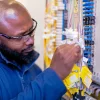Ofcom Propose BT and KCOM to Deliver 10Mbps UK Broadband USO UPDATE
As predicted Ofcom has today proposed that BT and KCOM should be designated as the official Universal Service Providers (USP) for the Government’s new “legally binding” Universal Service Obligation (USO), which from 2020 will make it possible for those in slow speed areas to request a broadband speed of at least 10Mbps.
The USO is expected to focus on catering for the final 1-2% of premises across the United Kingdom that are unlikely to be reached by a “superfast broadband” (24Mbps+) network come 2020. This is estimated to affect approximately 600,000 premises in 2020 or 860,000 if you were to deploy it today.
The USO is NOT an automatic service upgrade and as such it will only give people the “legal right” to “request” a 10Mbps+ capable broadband connection, albeit only in poorly served areas where no future upgrades are planned to deliver even faster speeds within the next year (required to limit conflict from network overbuilds).
Advertisement
The maximum wait time for such a connection to be installed, once requested and approved, is one year (i.e. often the necessary network will need to be built before you can connect to it). We note that USPs will also have 30 days to make an assessment about whether or not a consumer is eligible for the USO.
USO Specification
* A minimum download “sync” speed of at least 10Mbps (Megabits per second).
* A minimum upload “sync” speed of at least 1Mbps.
* A medium response time with end-to-end latency of no more than 200ms for speech applications.
* A maximum sharing between customers (contention ratio) of 50:1.
* A minimum data allowance of 100GB.
* A technology neutrality design (can be delivered via a mix of fibre based and / or wireless solutions).
A few months ago Ofcom revealed that 5 broadband ISPs had expressed a serious interest in becoming a USP, including Broadway Partners (wireless network), BT (Openreach), Hyperoptic, KCOM (Hull-only) and Quickline (wireless network). After further work the regulator decided that only BT, KCOM and Hyperoptic satisfied all of their criteria, but in today’s update we learn that the latter “withdrew its interest.”
Ofcom’s 3 Step Minimum Criteria
1) That they can adequately finance the delivery of the service and maintain adequate operation of the service between deployment and any compensation.
2) That the proposed geographic coverage area covers more than 5,000 eligible premises.
3) That the proposed technology would meet the technical specification set out in the legislation.
“While Hyperoptic provided evidence to meet the preliminary criteria in step 1, we did not consider that we had sufficient information from Hyperoptic to make a step 2 assessment of its ability to effectively deliver the USO. We engaged further with Hyperoptic, but Hyperoptic subsequently withdrew its interest,” said Ofcom.
Essentially this left Ofcom in the same position as they had with their original USO, with BT proposed as the USP for the whole of the UK (excluding the Hull Area) and KCOM covering the Hull area. We should point out that KCOM will have covered their entire network area in FTTP (plus a tiny bit of FTTC) broadband by March 2019 and so being a USP is unlikely to pose any real problem.
Advertisement
By comparison BT has said that they intend to use a mix of Fibre-to-the-Premises (FTTP) and Fibre-to-the-Cabinet (FTTC / VDSL2) to meet the USO, which in some areas could be very challenging for them to deliver within the stated time-scales. The expected rush of early requests may only compound such problems.
The obligation is to be funded by ISPs (industry) via a new Universal Service Fund (USF). On top of that it will also adopt uniform pricing (i.e. cost the same no matter where you live, with a maximum cap of £45 inc. VAT a month), have a cost threshold of £3,400 (i.e. you may have to help pay for it if the costs go above this) and support demand aggregation (i.e. multiple properties in an area could help to bring the deployment cost down).
Minister for Digital, Margot James, said:
“I welcome the progress Ofcom have made on implementing the Universal Service Obligation, which now means that eligible consumers will be able to request a connection by the end of 2019. This is all part of our commitment to ensuring that by 2020 every home and every business in Britain has access to high speed broadband.”
Today’s new consultation will close on 13th February 2019. Ofcom then intend to publish their final decision on designated providers and their obligations by early summer 2019. “We expect consumers to be able to make requests for connections from the end of 2019,” said the regulator (i.e. following a 5 month implementation period).
UPDATE 6th Dec 2018
Advertisement
We’ve added a comment from rural fibre optic ISP TrueSpeed, which did not express a serious interest in being a USP.
Evan Wienburg, CEO of TrueSpeed, said:
“Ofcom’s proposal that BT should be the only Universal Service Provider (USP), apart from KCOM in Hull, is bad news for eligible consumers living with inadequate or no broadband. Many of them will then have to wait up to a year just to get connected to an inferior broadband service over BT’s part-copper lines.
Part-copper is yesterday’s technology, and deploying it today is simply short sighted. It will do nothing to reduce the gaping urban/rural digital divide and will necessitate further upgrades to full fibre in the near future.”
Mark is a professional technology writer, IT consultant and computer engineer from Dorset (England), he also founded ISPreview in 1999 and enjoys analysing the latest telecoms and broadband developments. Find me on X (Twitter), Mastodon, Facebook, BlueSky, Threads.net and Linkedin.
« Newcastle, North Tyneside and Northumberland Bid for Gigabit Fibre
















































Comments are closed